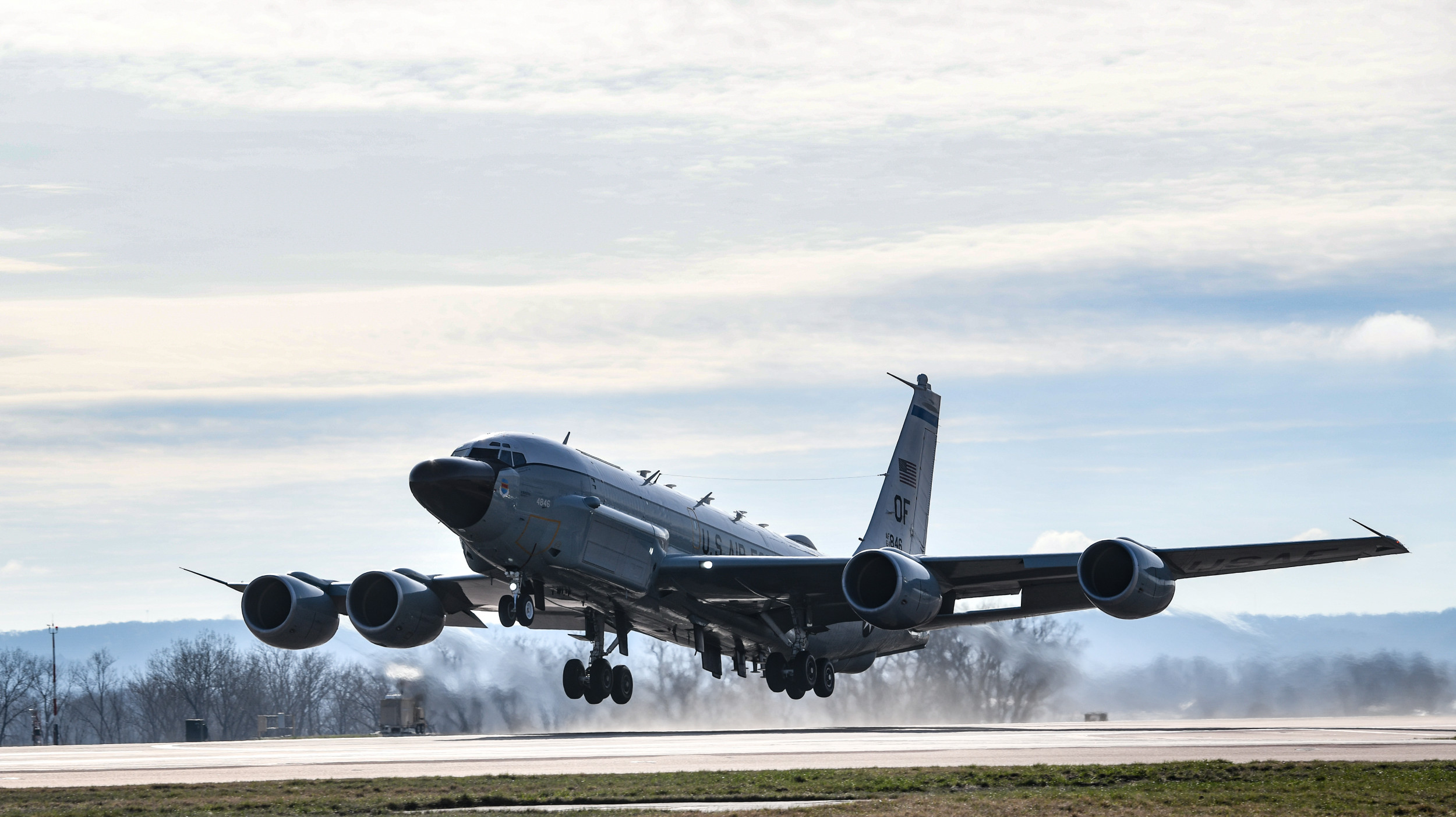
A U.S. Air Force Rivet Joint surveillance aircraft was spotted flying from a military base in the Middle East over the Persan Gulf near Iran, flight tracking data shows.
Newsweek has reached out to the Pentagon and the Iranian Foreign Ministry for comment.
Why It Matters
The Rivet Joint’s tracked flight over the Persian Gulf shows the deployment of manned surveillance aircraft alongside the long-standing reliance on drones to monitor Iran following a 12-day conflict with Israel during which the U.S. bombed major nuclear facilities.
The U.S. seeks to expand intelligence in the region given rivalries involving Iran, China, and Russia and security challenges that include nuclear developments in Iran, maritime security challenges and increased monitoring of China’s expanding military activities in the Indo-Pacific region.

Chad Watkins/U.S. Air Force
What To Know
The Boeing RC-135V Rivet Joint that flew a mission over the Persian Gulf operated out of Al-Udeid Air Base in Qatar, the largest U.S. air force base in the region.
The aircraft departed its home base at Offutt Air Force Base near Omaha, Nebraska, on Friday. It then transited through RAF Mildenhall in the United Kingdom on Monday, before arriving in Qatar on Wednesday, flight data from Flightradar24 showed.
The Rivet Joint is a Boeing plane with a crew of over 30 that can gather signals intelligence.
Tensions remain high in the region despite a truce between Iran and Israel. Iran said Wednesday it seized a foreign oil tanker in the Sea of Oman, suspected of carrying around 2 million liters of smuggled fuel.
Rivet Joint 64-14846 on its first mission over the Persian Gulf after arriving 2 days ago. Nice tracking today after they have been flying with transponders in a tactical mode. pic.twitter.com/dqENUzWULx
— MeNMyRC (@MeNMyRC1) July 16, 2025
The U.S. conducted two similar surveillance missions near Russian territory, with an RC-135V Rivet Joint departing from a British air base on Tuesday and flew through allied European airspace.
China, which is rapidly expanding its military, remains a key surveillance target for the United States. Beijing has repeatedly protested against what it describes as “close-in reconnaissance” near its coastline — operations that have, at times, led to tense or dangerous encounters between U.S. and Chinese aircraft.
While Iran has said it would be prepared for talks, it has also rejected U.S. demands that it stop uranium enrichment and has threatened to enrich up to bomb grade levels if European countries impose new sanctions. Iran denies seeking nuclear weapons.
The disagreement has raised the prospect of further military action if no deal can be reached and if Iran pushed ahead further with its nuclear program.
What People Are Saying
US President Donald Trump: “They [Iran] would like to talk. I’m in no rush to talk because we obliterated their site.”
Iran’s Supreme Leader Ali Khamenei: “We entered the war with strength. The proof for this is that the Zionist regime was compelled to turn to the US for help. If it had been capable of defending itself, it wouldn’t have turned to the US like that. It turned to the US for help… The US attacked Iran, and our retaliatory strike against it was very significant. God willing, once censorship is removed, it will become clear what Iran has truly done.”
What Happens Next
The situation is likely to remain tense in the Middle East while there is no agreement over Iran’s nuclear program. European countries and the United States have set a deadline of August.




